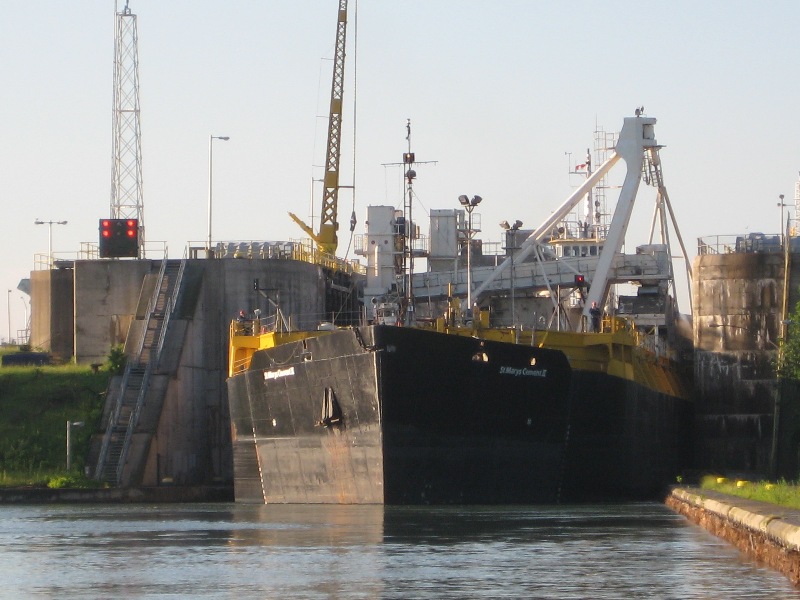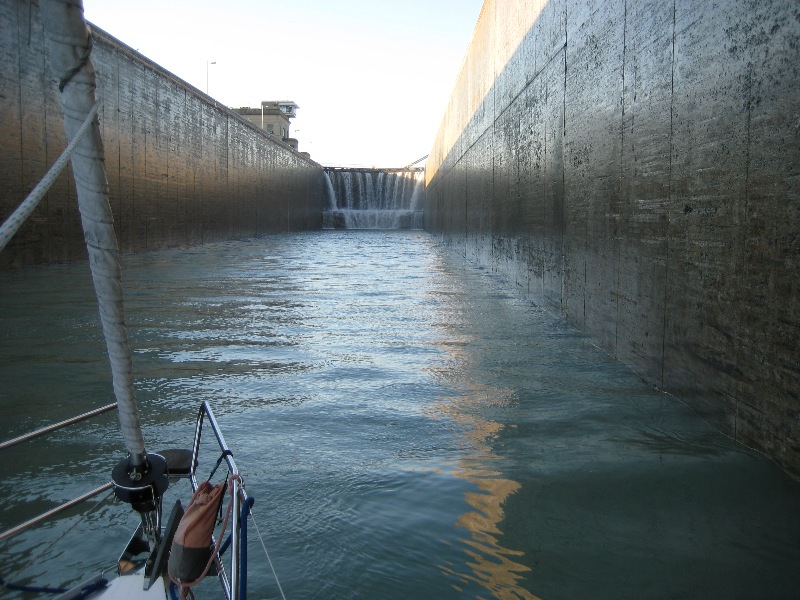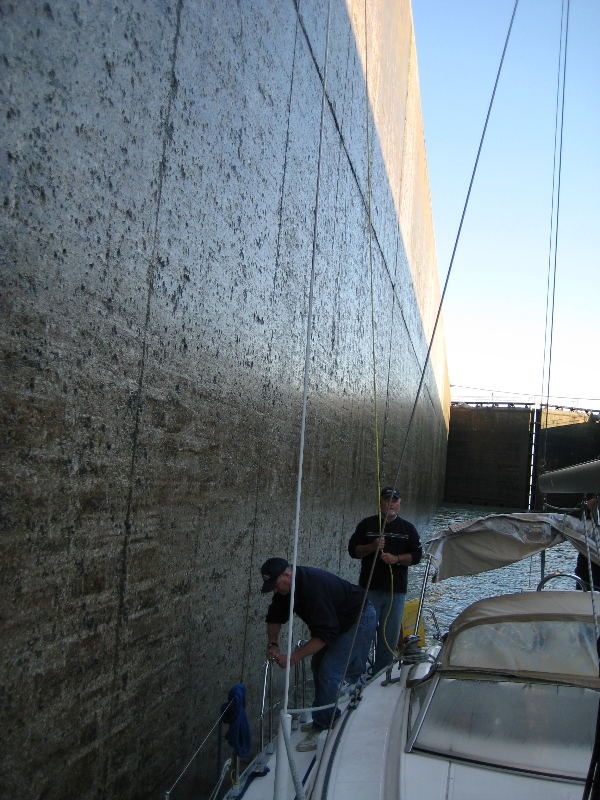Seven Days Non-stop Sailing Through the Great Lakes -
An Advanced Sailing Course
by Ben Ho March 2009
The unstable early-June weather was a battle between the receding cold air of spring and the advancing warm and humid air of summer, and as we drove through downtown Port Credit, Ontario, it was alternating between sunny blue skies and downpours, with the occasional thunderclaps thrown in. The forecast had called for stormy weather for the next several days, with plenty of rain and wind.
Perfect. I had signed up for an Advanced Sailing Course run by the Grassroots Sailing School, a one-week, all-weather, non-stop instructional sailing trip through three of the Great Lakes. This course, accredited by the Canadian Yachting Association, was one of the many milestones that I had planned to undertake towards fulfilling my dream of, someday… owning my own blue-water sailboat and sailing around the world. For such a course, you want every challenge to be thrown at you so that you can learn, and fix your mistakes, under the guidance of a certified instructor, on a proven boat. For calm weather sailing, I could learn easily enough on my own!
The trip started in Port Credit, heading south to cross Lake Ontario, passing through the Welland Canal, then eastward through Lake Erie, up the Detroit River, and via Lake St. Clair, heading north into Lake Huron, through the narrow channel at Tobermory, and finally sailed through Georgian Bay into the picturesque harbor of Penetanguishene. The total distance of about 700 nautical miles was to take 7 days of non-stop, day and night sailing through some of the most challenging bodies of water in the Great Lakes. It’s not exactly the Southern Ocean, but I figured it would be a valuable addition to my small-boat sailing experience, and to learn about open-water boat handling and navigating through some challenging waterways and canals. After conquering the Welland Canal - here I come, Panama Canal!
Stormy Night, Lake Ontario, Welland Canal
Our voyage began at midnight, as our instructor Ormie guided the crew of five aboard our boat, a Dufour 39 chartered by the school, out of the protection of the Port Credit harbor. The departure was timed such that we would cross Lake Ontario and arrive at the canal entrance at daybreak. The sky was heavily overcast and it was so dark that we had to use hand-held flashlights to avoid hitting channel markers as we left the harbor. A few drops of rain were soon followed by flashes of lightning. We were sailing right through an electric storm, with rapid flashes illuminating the pitch-black sky, contrasting against the Toronto skyline in the distance. It was an eerie but beautiful sight. We had not discussed procedures we should take in the event of lightning, but no one on the boat seemed to be worried; no one was rushing about to put away sensitive electronic equipment…so we continued into the dark night. Other than small puffs of wind that came with the occasional showers, there was little wind, so we motored along under the guidance of a handheld GPS. The boat had a chart plotter at the navigation station below, but it was an antiquated model that did not work too well.
We arrived safely at the entrance of the Welland Canal under a clearing sky, paid the canal fee and moved up the locks. Opened in 1932, the Canal is an engineering marvel that raises ships by 100 vertical meters (326 feet) using a series of 7 locks spread over 11 kilometers (7 miles). Numerous ocean freighters and commercial ‘Lakers’ use this canal to transverse the Great Lakes. Some of the Lakers are designed for the exact width of the canal, and as we waited for our turn we watched one of these monsters emerging from the gate – one way traffic only! For small sailboats like ours, when we get into a lock, the dockmaster (barely visible from a height of five stories) drops two heavy dock lines which we hold on to by hand to stabilize the bow and stern. The entrance gate closes, and millions of liters of water rapidly flow into the chamber to lift up the boat within minutes. In the confines of the lock chamber it is like a huge whirlpool, a bit un-nerving at first! I think going through the locks single-handedly would be impossible for a mid-size sailboat like ours,; a crew of 3-4 would be ideal. You need two sets of hands at the bow and stern, one at the helm, and one on standby to push the boat off against the strong eddy current created by the chamber flooding and to avoid scraping the hull against the canal wall.
It took us most of the day to get through the seven locks, with some delays while waiting for a section of the canal to undergo repairs. It was warm and sunny, and we took the opportunity to rest and recover from sailing non-stop through the previous night. On this early June day, pleasure craft traffic was non-existent and we were the only sailboat making our way through the canal. Once out of the lock chambers, there is plenty of docking space along the canal, which is mostly like a peaceful park with plenty of green spaces. But the pleasant weather was not to last. The air became increasingly humid and still as another weather front moved in, and large, ominous storm clouds rapidly formed in the distance.
Our chartered training boat, a Dufour 39
Up the Welland Canal
Into the “whirl pool’
Waiting to be raised by 40 ft
Storm Clouds Gathering in the afternoon





